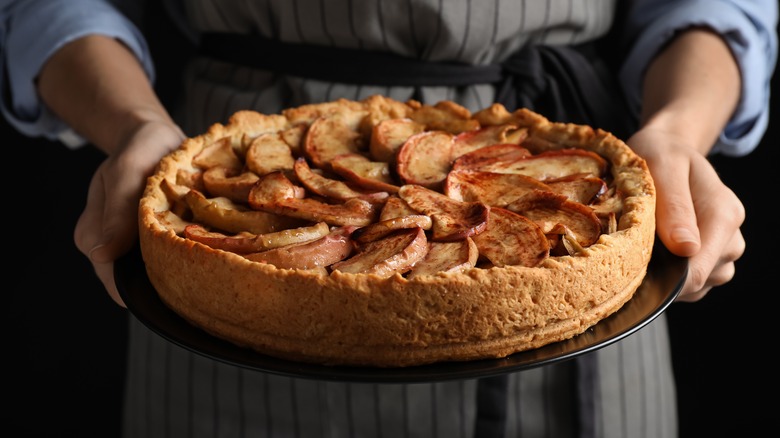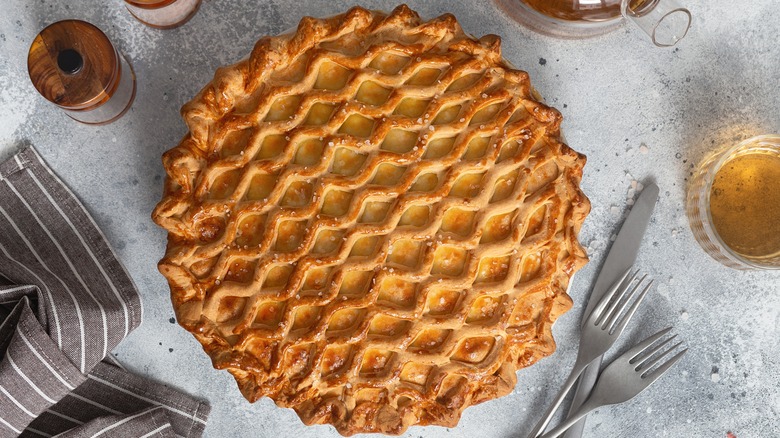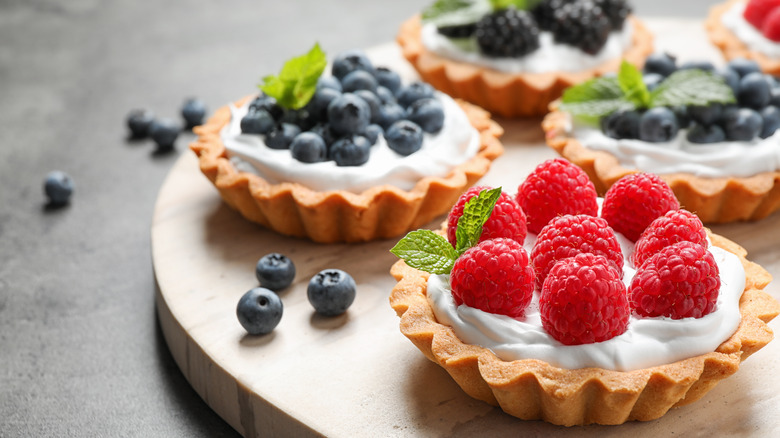Pie Crust Vs. Shortcrust: What's The Difference?
It feels like since the beginning of time, humans have drawn enjoyment from stuffing things like meats, cheese, and fruit into bread before eating. This says a lot about our love of bread and how versatile an element it really is! Think about it, pork dumplings are just bread-wrapped meat, as are classic dishes like beef wellington or pigs in a blanket, and cannoli is simply pastry wrapped around sweet cream, and apple pie — well, that one is self-explanatory, don't you think? The point is that most of our favorite, most comforting foods can be boiled down to being stuffed-bread goodies.
Scientific American claims that humanity began its long-term relationship with bread nearly 14,400 years ago, which means that we have been receiving nutrition from crushed and cooked grains since the Neolithic era! What does this mean for us? Well, it means that we've always been obsessed with bread, and who can blame us? But over the millennia we've managed to develop past the simple yet delicious flatbread into something more.
Now we have puff pastry and phyllo dough and garlic bread, and much more — including foods like pie crust and shortcrust, which are closely related but have a few differences that make them stand out from one another.
What is pie crust?
Pie crust is a classic pastry every baker should know how to whip up in a pinch. It can be used to hold custards and fruit, or to wrap up savory snacks like sausages! This super versatile and super flakey food is a baking basic that has been around since the era of ancient Greece where they made a pastry out of water and flour — which the Romans then adopted and adapted to their cuisine, wrapping the bread-stuff around meats and custards (via Time). And the Library of Congress says pie crust (used for a pie of course) is believed to have been fairly common during medieval times in England and became a key aspect of the now classic dessert (though they do love a savory meat pie).
According to Wonder How To, pie crust is made from very few and very simple ingredients including flour, fat (butter, shortening, or lard), and liquid (like water). Some people add a pinch of sugar and salt too, or a secret ingredient like vodka to create an extra flaky experience. Pie crust is ideally buttery, soft, and definitely not soggy or tough and chewy. The pastry is about striking the right balance between textures.
What is shortcrust?
While Masterclass says that pie crust is traditionally a flour and fat-based pastry to hold sweet and savory fillings, shortcrust pastry uses much of the same ingredients, just a bit differently. Shortcrust is traditionally made to use as a tart shell and (like pie crust) uses flour, fat, water, and sugar. Though according to All Recipes, shortcrust tends to be more crumbly than flakey and almost cookie-like in consistency. Shortcrust gets its texture because it has double the amount of flour than butter and is primarily used for baked goods like tarts, biscuits, and quiche.
So, what short crust and pie crust really have dividing them is the ratio of fat to flour and how it affects the texture of the pastry. Gambero Rosso International claims that shortcrust originated at least 1,000 years ago when it became relatively well renowned in the artisan baking world thanks to sugar making its way into the hands of those outside the Middle East.
There are several shortcrust pastry styles all with different characteristics, fat sources, and even intended uses, but the point is that pie crust and shortcrust pastry are both constructed using the same building blocks and are often used for many of the same purposes. However, they do have textual differences that set them apart from one another, making them preferred for different uses at times.


